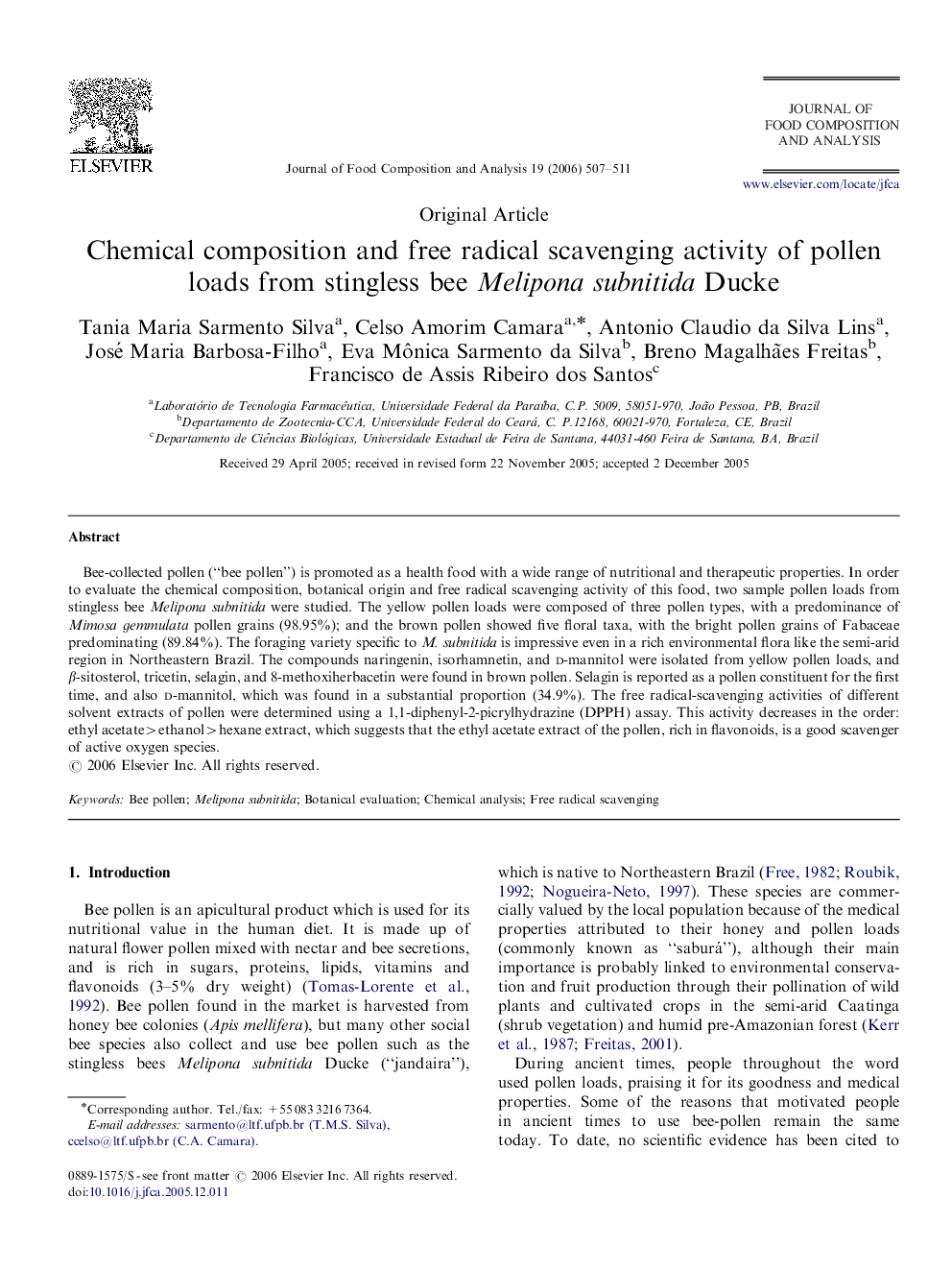| Article ID | Journal | Published Year | Pages | File Type |
|---|---|---|---|---|
| 1219429 | Journal of Food Composition and Analysis | 2006 | 5 Pages |
Bee-collected pollen (“bee pollen”) is promoted as a health food with a wide range of nutritional and therapeutic properties. In order to evaluate the chemical composition, botanical origin and free radical scavenging activity of this food, two sample pollen loads from stingless bee Melipona subnitida were studied. The yellow pollen loads were composed of three pollen types, with a predominance of Mimosa gemmulata pollen grains (98.95%); and the brown pollen showed five floral taxa, with the bright pollen grains of Fabaceae predominating (89.84%). The foraging variety specific to M. subnitida is impressive even in a rich environmental flora like the semi-arid region in Northeastern Brazil. The compounds naringenin, isorhamnetin, and d-mannitol were isolated from yellow pollen loads, and β-sitosterol, tricetin, selagin, and 8-methoxiherbacetin were found in brown pollen. Selagin is reported as a pollen constituent for the first time, and also d-mannitol, which was found in a substantial proportion (34.9%). The free radical-scavenging activities of different solvent extracts of pollen were determined using a 1,1-diphenyl-2-picrylhydrazine (DPPH) assay. This activity decreases in the order: ethyl acetate>ethanol>hexane extract, which suggests that the ethyl acetate extract of the pollen, rich in flavonoids, is a good scavenger of active oxygen species.
